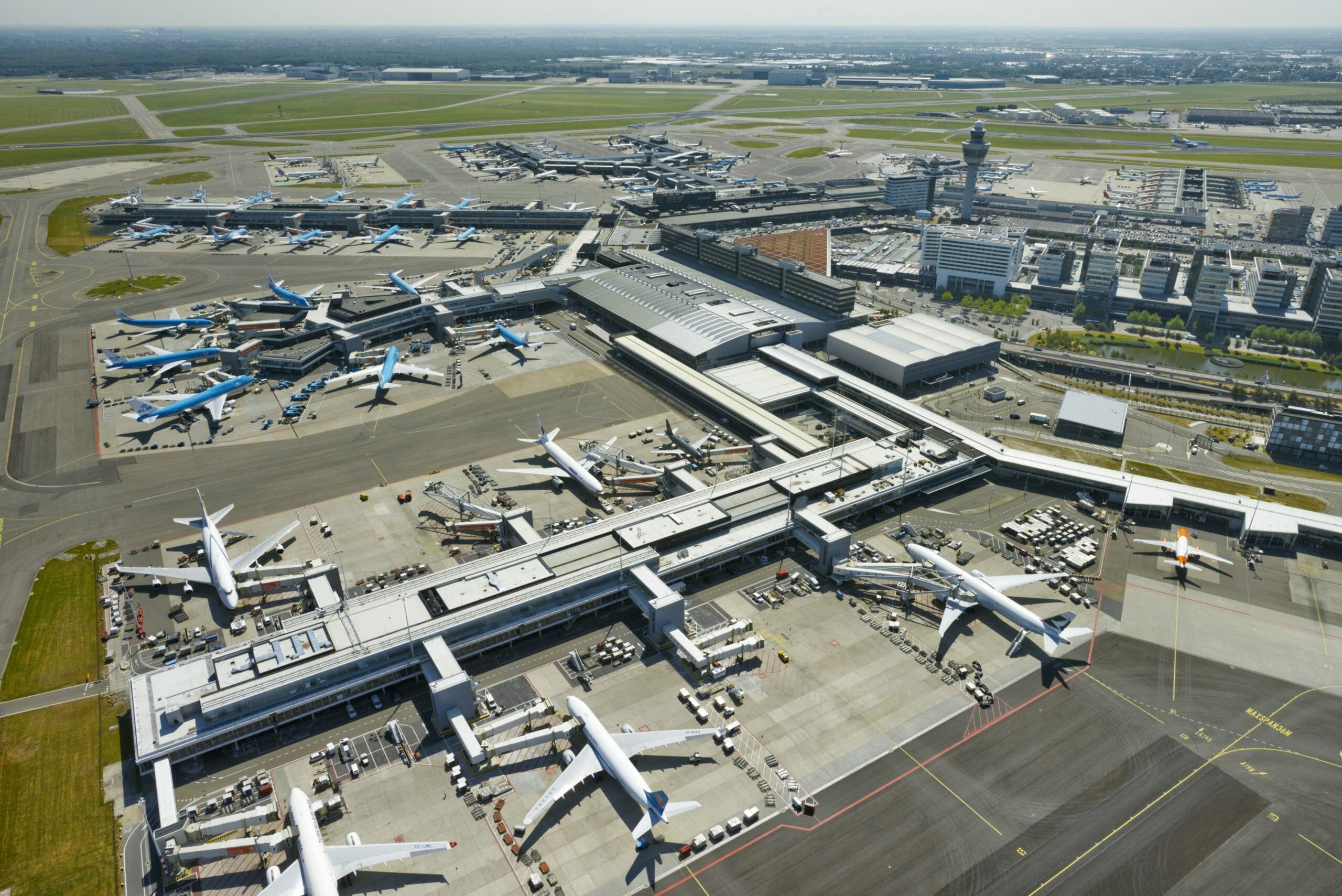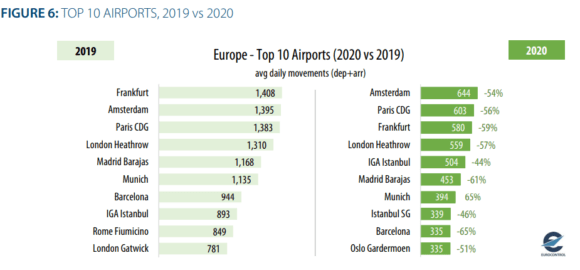
209007 scaled
Ryanair has been the busiest European airline in 2020 as far as the number of daily flights is concerned. In a year dominated by the Covid-crisis, the low-cost operated on average 951 daily services, 59 percent fewer compared to 2.323 in the previous year, a ‘think paper’ from Eurocontrol reports.
Europe’s aviation has been hit the hardest by the Covid-restrictions, which resulted in travel restrictions, multiple lockdowns, border closures, and bans that still continue into the new year. Traffic in 2020 was down by on average -55 percent with five million flights operated compared to 11.1 million in 2019. April 12 was the low point in the crisis, with traffic down by -92.8 percent or 2.099 flights. The high point was August 28, when traffic was down by ‘only’ -48 percent or 18.802 flights. The crisis resulted in 1.7 billion fewer passengers and cost the airlines, airports, and air navigation service providers a combined EUR 56.2 billion.
In April, low-cost airlines were hit harder by the pandemic, with traffic down by an average of 63 percent but during the summer they recovered more quickly. Legacy carriers were down by on average -60 percent as they benefitted from repatriation flights and cargo business. All-cargo traffic was down only one percent and doubled the market size to six percent.
Despite an almost full grounding in April and May, Ryanair managed to operate almost a thousand daily services to keep its top spot. The airline will release its passenger numbers for December shortly, although its financial year runs from March to March. Between March and November, it flew 23.4 million passengers. August was the busiest month with 7.7 million.
Turkish Airlines notched up second place in the traffic standings, moving up from fourth in 2019. It operated on average 626 daily flights, still, -53 percent compared to the previous year. In May, Turkish was the busiest airline.
Easyjet is in third place with 547 daily flights, -67 percent compared to 2019. Lufthansa Group dropped from third to fourth place with 513 daily flights (-65 percent). The Group suffered from the prolonged grounding of especially Austrian.
Notable changes are that of Wizz Air, which moved up from twelfth to ninth with 312 daily flights (-47 percent), and Norwegian, which saw an almost total collapse of traffic and -73 percent fewer flights.
Amsterdam EU’s busiest airport in daily movements
Covid also shook up the traditional order of Europe’s busiest airports. Despite the closure of various terminals and announcing today a drop in pax numbers by -71 percent to 20.9 million, Amsterdam Schiphol fared best with 644 daily movements, ahead of Paris Charles de Gaulle, Frankfurt, and London Heathrow.
By traffic, the UK was hit the hardest at -61 percent or 1.3 million flights, followed by Germany (-56 percent or 1.2 million flights), and Spain (-61 percent of one million fewer flights). Intra-European traffic changes dramatically, with domestic traffic taking over in France, Spain, Norway, and Turkey. In the Eurocontrol ranking, the busiest intra-European routes were between Spain and the UK in eight place.
In 2021, Eurocontrol is expecting traffic to return to 51 percent of 2019-levels or 5.64 million flights. It has calculated four scenarios for recovery and this number is based on scenario 2, in which a vaccine is widely available to travelers by 2022. In 2024, traffic should have recovered to 92 percent or 10.24 million flights. Eurocontrol is forecasting “substantial failures” which can only be prevented if states continue their support of the airline industry.
In its paper, Eurocontrol is calling on states to get on with essential reforms in Europe’s outdated air navigation systems, in particular the European Single Sky. “Past mistakes need to be addressed head-on, and the status quo can no longer be maintained with regard to economic regulation and airspace management. Reform is essential, and the new Single European Sky proposals currently under consideration by EU bodies present possible options to help drive down costs and ensure that there is scalable capacity in the years ahead.” During 2020 and with reduced traffic, Eurocontrol relaxed some 1.200 airspace restrictions to improve airline operations and cutting short routes. Improvements in procedures are adamant if the industry wants to meet its sustainability and decarbonization targets set out in the EU’s Green Deal.
Views: 3






